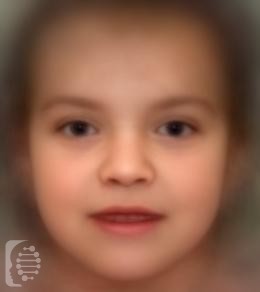What is Basal Cell Nevus syndrome (BCNS)?
Sometimes referred to as Gorlin syndrome, Basal Cell Nevus is a genetic condition that puts affected individuals at a possible greater risk of cancer.
Affected individuals are at higher risk of being diagnosed with basal cell carcinoma (the most common form of skin cancer) during puberty.
Defining features of the syndrome include issues with the skin, endocrine and nervous systems, eyes and bones.
This syndrome is also known as:
Basal cell nevus syndrome BCNS; Gorlin Syndrome; Gorlin-Goltz Syndrome; Multiple Basal Cell Nevi, Odontogenic Keratocysts, And Skeletal Anomalies NBCCS Nevoid Basal Cell Carcinoma Syndrome; Nbccs
What gene change causes Basal Cell Nevus syndrome (BCNS)?
Mutations in the PTCH1 and SUFU genes are responsible for the syndrome.
Mutations in these genes affect the sonic hedgehog and SMO signaling which control cell growth. This disruption is believed to be responsible for causing the cancers associated with this condition.
The syndrome can be inherited in an autosomal dominant pattern but many cases are the result of a de novo or new mutation.
In the case of autosomal dominant inheritance, just one parent is the carrier of the gene mutation, and they have a 50% chance of passing it onto each of their children. Syndromes inherited in an autosomal dominant inheritance are caused by just one copy of the gene mutation.
In some cases, a genetic syndrome may be the result of a de-novo mutation and the first case in a family. In this case, this is a new gene mutation which occurs during the reproductive process.
What are the main symptoms of Basal Cell Nevus syndrome (BCNS)?
Basal cell carcinomas and cancers, as well as non-dematological tumors.
Unique facial features of the syndrome include a large head and coarse face, high-arched eyebrows, widely spaced eyes, and a broad nasal bridge. A cleft lip or palate may also be present.
Other physical characteristics of the syndrome include skeletal abnormalities, such as fused ribs.
Possible clinical traits/features:
Autosomal dominant inheritance, Polycystic ovaries, Polydactyly, Hand polydactyly, Melanocytic nevus, Plantar pits, Orbital cyst, Osteolysis, Nystagmus, Parietal bossing, Palmar pits, Palmoplantar keratoderma, Ovarian fibroma, Ovarian neoplasm, Renal cyst, Seizure, Epicanthus, Cleft upper lip, Cleft palate, Coarse facial features, Sprengel anomaly, Conductive hearing impairment, Motor delay, Brachydactyly, Cryptorchidism, Finger syndactyly, Proptosis, Telecanthus, Frontal bossing, Skin tags, Sacrococcygeal pilonidal abnormality, Variable expressivity, Vertebral segmentation defect, Scoliosis, Spina bifida occulta, Spina bifida, Vertebral fusion, Hamartomatous stomach polyps, Supernumerary ribs, Vertebral wedging, Macrocephaly, Sarcoma, Strabismus, Down-sloping shoulders, Skin ulcer, Heterogeneous, Irregular ossification of hand bones, Kyphoscoliosis, Odontogenic keratocysts of the jaw, Iris coloboma, Intellectual disability, Mandibular prognathia, Neoplasm of the skin, Tall stature.
How is it diagnosed?
To find out if someone has a diagnosis of Basal Cell Nevus syndrome, it is important to have a consultation and evaluation with a clinical genetic specialist. Specialists may also suggest specific genetic testing or other types of tests to help reach a diagnosis. FDNA’s AI technology can help speed up the diagnostic process by analyzing facial features and other health information.

